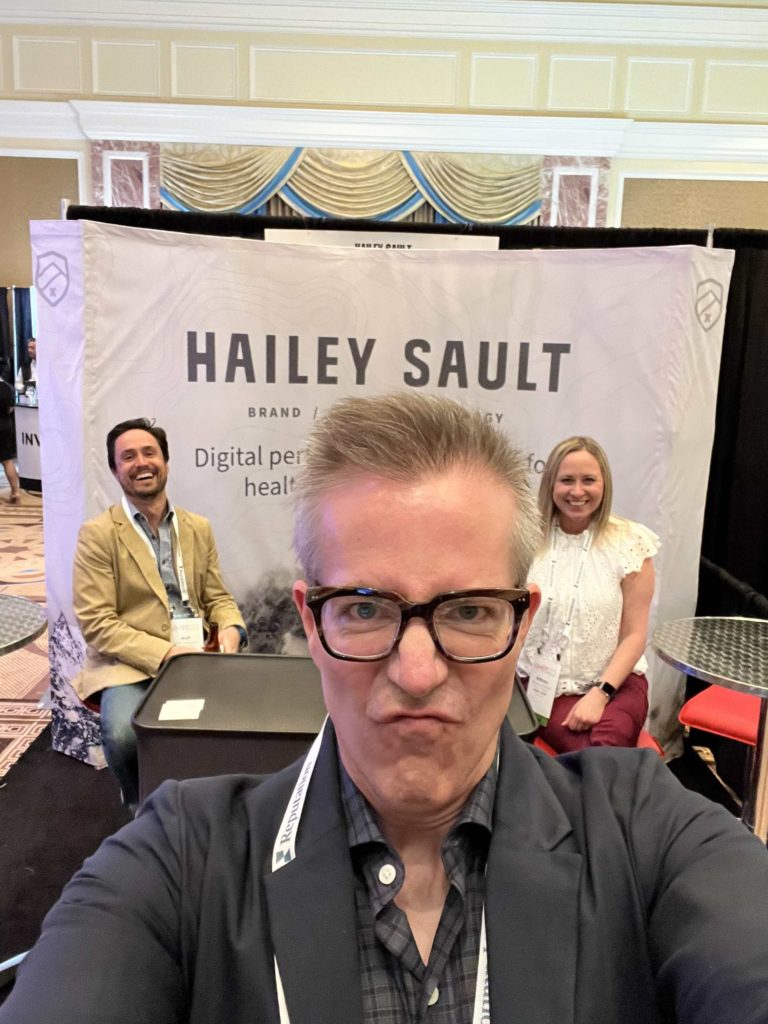Well, it’s official. The Great Healthcare Disruption is here.
And depending on who you are (and perhaps what organization you’re with), you’re feeling either:
- Nervously excited
- Nervously worried
Healthcare has, until just about the day before yesterday, meant hospitals, doctors in white lab coats, and patients waiting and waiting and waiting. But marketing prophets like Rob Klein kept warning us, “Retail is learning healthcare faster than healthcare can learn retail.” Industry scholars like James Gardner have been tracking Amazon, WalMart, CVS and other “non-healthcare” brands and their moves into healthcare, and, like a modern-day Paul Revere, also warned of massive disruption.
What’s the big deal, you might ask? Those brands are only peeling off primary care and urgent care patients: small dollars to a big hospital.
That might be true: for now.
But those aren’t the only disrupters to the conventional healthcare paradigm.
Study these brands and you’ll start to see a bigger picture forming: a picture in which the traditional hospital is uprooted and replaced with something far different, and far from healthcare as we knew it:
Many hospital administrators are admitting that the future is looking very, very uncertain. Consider this headline from a recent HealthLeaders article: Scripps Retiring CFO Says New Thinking Is Needed For An Uncertain Future.
Are you nervously excited? Or are you nervously worried? Hold that thought. There’s more disruption to speak of before you answer that question.
After returning from 2022’s HMPS, it became clear to me: The Great Disruption was here.
It was my first large in-person conference since the pandemic started. I felt the nervous energy in the air. A great deal of that nervous energy came from the simple fact that most of us have not been in rooms full of people in years. It’s going to take awhile for it to feel normal again.

Attendees shared with me that being in-person again, after all this time, took getting used to. I posted a photo of myself on Facebook flying without a mask—a novelty after all these years of indoor mask mandates. I love Cynthia Manley’s comment:
“It’s weird. I met someone new at the recent AAMC GiA meeting and she extended her hand. I hesitated a beat and thought, sh*t, we’re doing this now.”
The novelty of being together in-person contributed to the nervous energy. But it wasn’t bad energy. As Judy Neiman shared with me, people were excited to be together again, after all this time. I agree.
And that time together led to really interesting conversations. Especially the conversations about disruption. That disruption isn’t just about retail brands coming into the healthcare arena.
If it were only that simple.
Think about the disruption involving:
- Burned out workforces
- Escalating labor costs
- Inflation
- Supply chain
Or how about these “lovely” disrupters:
- Virtual care as a consumer mandate
- Mental health crisis
- Skyrocketing rates of drug overdoses
- Inequities in healthcare (which has always been there but suddenly—thankfully—being given the attention it deserves)
Not to mention “COVID Brain,” a term Rob Klein coined to describe how challenging many people say it is to think, process information, and to concentrate. (Ask Rob to share the stats: what his research shows of how challenged millennials are these days is disturbing.)
There’s Another Healthcare Disrupter in the Air
At HMPS, I had brilliant conversations with so many people about the need to not go back to “how we did it before.” In the early days of COVID, hospitals set up virtual care programs almost overnight: a feat that would not have been possible without the pandemic crisis. We also quickly learned we could work just about anywhere. Offices are nice, but not essential for marketers and communicators.
Many of the people I spoke with at HMPS were leaning into disruption: things were broken before COVID-19. It just took the disease to reveal how broken so much of our healthcare system is.
The appeal I heard over and over again was that we can’t return to how things were before. As Kurt Vonnegut said, “We can’t return to the good old days, there have just been days.”
For many of my colleagues and contemporaries in healthcare marketing, the shared sentiment is that it’s time to be clear on our purpose: as organizations, and as individuals, and to ask fundamental questions:
What is the role of a hospital moving forward?
Why can’t we figure out the ROI in helping people stay healthy and out of the hospital?
Are we working on the right problems?
During the conference, I joined Chris Boyer on a taping of an episode of his touch point podcast with Vanessa Hill, Ahava Leibtag, and JK Lloyd. We discussed the state of healthcare marketing, but also got into a spirited discussion about many of these disrupter topics. (I highly recommend checking out the episode.)

As marketers and communicators, I think we’re acutely aware of the human condition: which is, in essence, to seek comfort. After the 2+ tumultuous years we’ve experienced, it’s normal, natural, and sane to want to take a break from the big, gnarly challenges we’ve faced professionally and personally. I find myself saying often, “Can I take my foot off the gas for a minute?”
But then there’s that annoying “disruption” element in the air: coming from retail, the healthcare worker shortage, healthcare startups, consumers, and the economy. And that makes the nervousness palpable.
It’s Time for a Disruptive Mindset
As it turns out, John F. Kennedy was incorrect. The word “Crisis” in Chinese is not, as he suggested, composed of two characters: Danger and Opportunity. But there’s something valuable in this notion, even if incorrect.
Disruption means a change to the status quo. And if the status quo isn’t delivering all that healthcare could be, then it opens the door to reimagining.
And that reimagining often begins with asking really good questions.
Like the one Tanya Andreadis, Chief Marketing & Vice President Patient Engagement Officer at Penn Medicine asked during a panel session at HMPS.
The question posed to her was innocuous. Someone wanted to know how to innovate online physician directories. As CMO of a leading health system known for cutting-edge digital strategies, Tanya would know as well as anyone how to finesse physician directories.
But Tanya answered the question with a question. She asked the audience, “Do we even need physician directories anymore?” Tanya went on to talk about how difficult it is to maintain directories while more and more consumers are finding doctors from different online sources. She brilliantly questioned the basic need of a technology that has been the albatross around the necks of countless marcomm departments.
It was such a simple response from her, but it was telling of the state of disrupters: and the benefits of a disruptive mindset. Isn’t it time we look at what we’re doing and ask if it’s of value? What is the higher purpose and meaning of our work? Should we keep doing things because, quite frankly, we’re on autopilot?
In an age of disruption, it’s time to invite disruptive thinking. Tanya’s question is as good as any to get the reimagining started.
There are brilliant minds in healthcare marketing who are searching for the next breakthrough and are agents of positive change. I’m blessed to know many. If you know somebody like that, share this article and start a conversation. That’s how all great change begins.
Shameless plug

Our team at Hailey Sault had a blast at HMPS and we’re excited to participate next year in Austin, TX. Planning to go? Come see us at the booth or say hello in the hallway. We’re always up for a great conversation.



